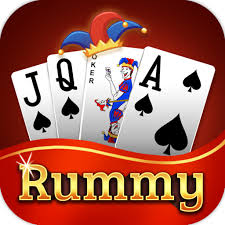Rummy Gameplay, is a group of matching-card games that involve forming sets and sequences with the cards in hand. The objective is to arrange your cards into valid combinations while also trying to minimize your remaining points if you don’t go out. Rummy can be played with 2 to 6 players, using a standard deck of cards, and there are several variations, including Indian Rummy, Gin Rummy, and Kalooki.
Basic Rules of Rummy
1. Deck and Players
Rummy is typically played with one or two decks of cards, depending on the number of players. Each player is dealt a specific number of cards (usually 13 in Indian Rummy) while the remaining cards form the stockpile.
2. Objective
The primary goal is to form valid combinations with your cards. A valid combination can be:
- Set: Three or four cards of the same rank but different suits (e.g., 7♠, 7♦, 7♥).
- Sequence: Three or more consecutive cards of the same suit (e.g., 5♣, 6♣, 7♣).
3. Gameplay Flow
- Drawing Cards: Players take turns to either draw a card from the stockpile or pick the top card from the discard pile.
- Melding: After drawing, players can choose to lay down their valid sets and sequences on the table.
- Discarding: To end their turn, players must discard one card to the discard pile, keeping their hands manageable and strategic.
4. Going Out
A player goes out by forming valid sets and sequences with all their cards, except one. They must also ensure that any remaining cards in their hand are either a part of a valid combination or can be melded. The round ends when one player goes out.
5. Scoring
If a player goes out, the other players tally the points of the cards left in their hands. Typically, face cards (Kings, Queens, Jacks) are worth 10 points, while numbered cards hold their face value, and Aces can be worth 1 or 11 points, depending on the variation played.
Strategies for Winning at Rummy
1. Observe Your Opponents
Pay attention to the cards your opponents pick and discard. This can give you valuable insights into their strategies and help you make better decisions about what to keep or discard.
2. Manage Your Hand
Keep your hand organized by grouping potential sets and sequences. This makes it easier to identify valid combinations and adjust your strategy as the game progresses.
3. Bluffing
Sometimes, discarding cards that could potentially be useful to your opponents can confuse them about your strategy. This can lead them to make poor decisions, giving you an advantage.
4. Use Jokers Wisely
In variations where Jokers are wild, use them strategically to complete sets or sequences. However, be mindful of how and when you use them, as they can also provide your opponents with critical advantages.
5. Know When to Discard
Be cautious about which cards you discard. Avoid discarding cards that could help your opponents complete their sets or sequences. It’s often better to hold onto potentially useful cards until you’re confident in your combinations.
Conclusion
Rummy is an exciting and strategic game that combines elements of luck and skill. Understanding the gameplay mechanics, rules, and strategies can significantly enhance your chances of winning and make the game more enjoyable. Whether you’re playing casually with friends or competing in a tournament, mastering the nuances of rummy will ensure a rewarding gaming experience. So gather your cards, invite your friends, and dive into the captivating world of rummy! Happy playing.




